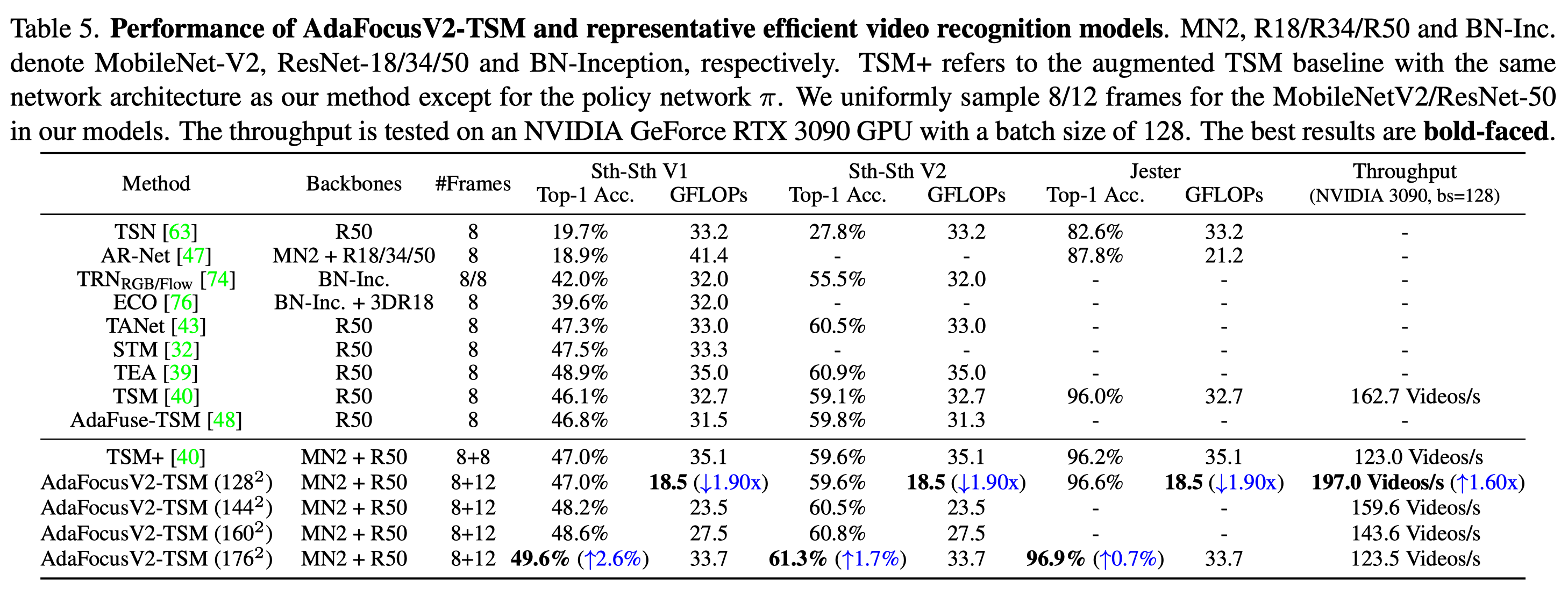This repo contains the official code and pre-trained models for AdaFocusV2.
If you find our code or paper useful for your research, please cite:
@InProceedings{wang2021adafocus,
author = {Wang, Yulin and Chen, Zhaoxi and Jiang, Haojun and Song, Shiji and Han, Yizeng and Huang, Gao},
title = {Adaptive Focus for Efficient Video Recognition},
booktitle = {Proceedings of the IEEE/CVF International Conference on Computer Vision (ICCV)},
month = {October},
year = {2021}
}
@InProceedings{wang2022adafocusv2,
author = {Wang, Yulin and Yue, Yang and Lin, Yuanze and Jiang, Haojun and Lai, Zihang and Kulikov, Victor and Orlov, Nikita and Shi, Humphrey and Huang, Gao},
title = {AdaFocus V2: End-to-End Training of Spatial Dynamic Networks for Video Recognition},
booktitle = {Proceedings of the IEEE/CVF Conference on Computer Vision and Pattern Recognition (CVPR)},
year = {2022}
}
Recent works have shown that the computational efficiency of video recognition can be significantly improved by reducing the spatial redundancy. As a representative work, the adaptive focus method (AdaFocus) has achieved a favorable trade-off between accuracy and inference speed by dynamically identifying and attending to the informative regions in each video frame. However, AdaFocus requires a complicated three-stage training pipeline (involving reinforcement learning), leading to slow convergence and is unfriendly to practitioners. This work reformulates the training of AdaFocus as a simple one-stage algorithm by introducing a differentiable interpolation-based patch selection operation, enabling efficient end-to-end optimization. We further present an improved training scheme to address the issues introduced by the one-stage formulation, including the lack of supervision, input diversity and training stability. Moreover, a conditional-exit technique is proposed to perform temporal adaptive computation on top of AdaFocus without additional training. Extensive experiments on six benchmark datasets (i.e., ActivityNet, FCVID, Mini-Kinetics, Something-Something V1&V2, and Jester) demonstrate that our model significantly outperforms the original AdaFocus and other competitive baselines, while being considerably more simple and efficient to train.
- Compared with AdaFocusV1
- ActivityNet, FCVID and Mini-Kinetics
- Something-Something V1&V2 and Jester
- Visualization
Please go to the folder Experiments on ActivityNet, FCVID and Mini-Kinetics and Experiments on Sth-Sth and Jester for specific docs.
If you have any question, feel free to contact the authors or raise an issue. Yulin Wang: wang-yl19@mails.tsinghua.edu.cn.









